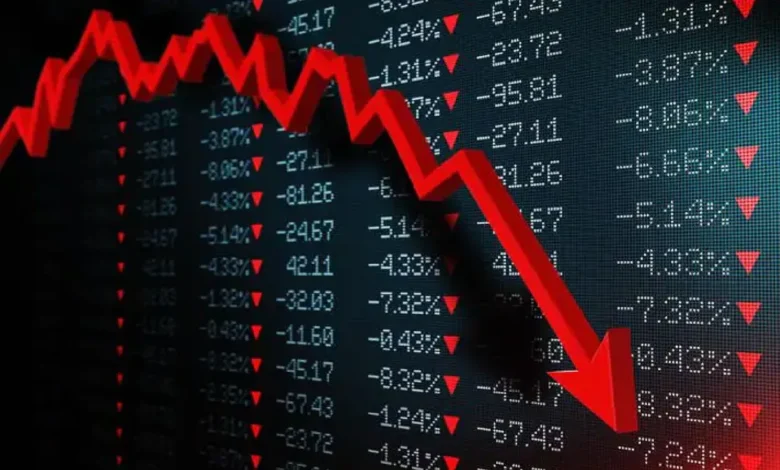Israel-Hamas war and Russia-Ukraine conflict: Impact on India’s economy and global markets
The global economy, already suffering from the severe effects of the Russian invasion of Ukraine in February 2022, has now faced a new challenge with the Israel-Hamas war.

The global economy, already suffering from the severe effects of the Russian invasion of Ukraine in February 2022, has now faced a new challenge with the Israel-Hamas war. This conflict erupted unexpectedly on October 7 when Hamas, the militant nationalist group that controls Gaza, launched attacks on major Israeli population centers. The Israeli response was swift with retaliatory airstrikes. The death toll from this escalating conflict has already reached approximately 6,000 and is likely to rise, particularly with the consideration of a ground invasion by Israel of the Gaza Strip.
The Impact of the Russia-Ukraine War
In the aftermath of the COVID-19 pandemic, the global economy was in its recovery phase when the Russia-Ukraine war erupted. The war, between a renowned energy producer – Russia, and a globally recognized agricultural producer – Ukraine, resulted in a drastic increase in energy prices, a worldwide food shortage, and inflation. The global growth, both in the developed and emerging economies, has been far less than anticipated. The International Monetary Fund (IMF) predicted that the global growth rate will drop from 3.5% in 2022 to 3% in 2023 and will reduce further to 2.9% in 2024 – significantly below the average 3.8% growth rate.
Global Repercussions
Global inflation saw an increase of up to 9.2% in the wake of the Russian invasion of Ukraine and then dropped to 5.9% in 2023 as a result of interest rate hikes by central banks worldwide. The IMF has predicted a further decrease in inflation to 4.8% in 2024, however, the ongoing tensions in West Asia may shift this prediction. This is a concern for multiple nations, particularly India that could face a significant impact due to these unfolding, unpredictable geopolitical events.
Recent geopolitical tensions have affected not only the economy but also the financial markets over the past few years. The repeated disruptions from the Brexit fallout, conflict between China and the US, and the Russian invasion of Ukraine, have all cumulated into an unstable environment. Now, the war between Israel and Hamas has increased global anxiety and uncertainty, and there is a genuine fear that if the situation escalates and other countries get involved, particularly Iran, it could lead to severe disruptions and a major global slowdown.
Impact on Global Growth and Inflation
A recent report detailed in Bloomberg Economics analyzed the potential impact of the Israel-Hamas war on global growth and inflation. It delineated three scenarios. First – if the war remains localized to Israel and Palestinian territories, it might not significantly affect oil prices, inflation, or growth. However, in the case of a multi-front war spreading to Gaza, West Bank, Syria, and Lebanon, with accompanying unrest in larger West Asia, oil prices could increase by $8 per barrel, inflation by 0.2 percentage points and growth would likely slow by 0.3 points. The third scenario outlined was a direct war between Israel and Iran, paired with unrest in West Asia – this could push up oil prices by an additional $64 a barrel, reaching up to $150 per barrel. In this case, inflation could rise by 1.2 points with a reduction in GDP growth by 1 point.
The Effect on Oil Prices
The connection between the Indian and global economies is deep. In the short term, rising oil prices could bear directly upon this relationship because they could potentially decrease government spending. However, India was able to handle the situation delicately in the wake of the Ukraine crisis by importing more affordable oil from Russia. In the case of the Israel-Gaza conflict, unlike Russia, neither Israel nor Gaza is a major oil producer. But the repercussions of this conflict could spread to West Asia, a region that houses major oil producers such as Iran and Saudi Arabia.
Any disruption in the Strait of Hormuz, a key geostrategic “choke point” that transports one-fourth of world oil and one-third of its liquefied natural gas, would directly affect global oil and gas supply and their prices.
Uncertainty Over Economy Corridor
A significant casualty of war could be the India-Middle East-Europe Economic Corridor (IMEEC). The IMEEC, which was created to develop alternative supply chains independent of the Chinese production network, could be shelved due to the ongoing unrest. The war conflicts are separating some of the Arab partners. However, the Indian government is determined to maintain the project, being a long-term initiative. The government has resolved to keep communication lines open with stakeholders despite short-term concerns.
The Depreciating Rupee
The Indian rupee witnessed an all-time low of 83.28 against the dollar on October 16 due to the rising oil prices leading to a widening in the country’s trade deficit. A weaker rupee could increase export costs causing additional inflation at home. This also puts a strain on consumer spending right around the festive season. Furthermore, this diminishes the prospects of the Reserve Bank of India (RBI) lowering the interest rates anytime soon.
The Indian economy’s combined trade deficit was $40.2 billion in the first half of the current fiscal. Although products exports have slowed down, the gap has been bridged by strong services exports, while imports continue to decline. The Indian market sentiments, though shaky, still pose a limited risk of the rupee weakening further due to the country’s current account deficit.
A Nervous Stock Market
Despite the international turmoil, the resilience of the world economy is evident in the performance of stock markets, which initially pulsed with anxiety. Following Israel’s retaliation to the Hamas attack, investors hastily withdrew money especially from emerging markets, causing markets to dip. Hope that the conflict would be confined within Gaza spurred a quick recovery. However, the situation remains uncertain with Indian stock markets experiencing turbulence. The BSE Sensex plummeted by 826 points – its largest single-session loss since July – before closing at 64,572 points on October 23. The Nifty also dropped by 261 points, closing at 19,282 points on the National Stock Exchange.
Impact on Trade
India-Israel trade relations have flourished since the establishment of their diplomatic ties back in 1992. From a modest $200 million in 1992, primarily comprising diamonds, the bilateral trade evolved and expanded to a robust $10 billion (excluding defense) in 2022-23, with India taking in the benefits of a positive balance of trade. That said, the current geopolitical pressures pose serious questions about the continuity of this upward trajectory. A prolongation of the conflict affecting the wider regions could starkly hit trade between the two nations, considering the UAE, another significant player in West Asia, is India’s second-largest trading partner.
India’s Growth Amid Uncertainty
India’s impressive bounce-back from the pandemic, registering a 7.8 percent growth in the previous fiscal, is no small feat. Yet, the real challenge lies ahead. Can India maintain this momentum in the face of these geopolitical disruptions? Anticipations of growth for the current fiscal hover around 6 percent, but these are far from assured amid the current crises. India may have managed to drive past the burden of the COVID pandemic, but a human-caused conflict of this nature presents an entirely distinct set of challenges.
You might also be intersted in – India advocates people-centric approach for Ukraine, criticises ineffectiveness of UNSC



